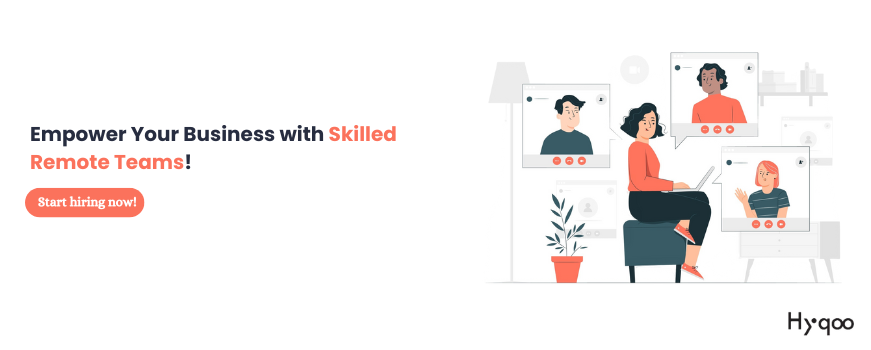9 Mins
9 Mins
While hands-on experience is the best teacher to help employees learn essential skills easily and understand the industry-standard practices, it is essential for managers to provide training to the employees to improve their skillsets.
As per Monster Job Index July 2021 report, around 80% of employees think that their current employer do not given them growth opportunities. 54% of employees do not have competent skills to thrive in their workplace, especially when it comes to collaboration with technology.
With more work-from-home opportunities, employees prefer to live in their comfort zone, which affects the workplace productivity. That’s why, managers should motivate their employees to develop new skills. Learning and development is one of the best benefits that employers can give to their employees. Besides, it is something that encourages the applicants to apply for the vacant position in your company. Let’s understand how you can help your team build new skills.
As a team leader, you want your team to be polished with new skills so they can help in catering different and evolving needs of your clients easily. Here’s how you can implement this with your team:
Step 1. Assess their Needs
As a manager, it is your responsibility to track your team member’s performance across different aspects. You need to understand where a particular team member is lacking the skills that affects the performance or productivity. Evaluate the talents and weakness of every team member and give them feedback. If they are still finding it difficult to work on their weaknesses, then it is something they need to be trained on.
Also, you need to consider your team member’s desires to understand if there are any skills they want to develop. Conducting a 1:1 call will help you understand their views, and accordingly you will get an idea where to get started with.
Step 2. Offer Resources
As a team lead, you have to support your team and take a stand for them. You can support their skill development by providing them required resources and opportunities to learn. You can provide them access to online courses, workshops, conferences, online training sessions, and mentorship programs as per their learning styles.
You will have to adjust their work schedules, so they focus on completing their course. To monitor their progress, you can conduct calls with them to get a report on what they have learned and how it can implemented in real-life situations.
Step 3. Give them Tasks
The best way to test new skills is to utilize them in solving problems and challenges. While employees can complete the test at the end of the course and provide you results, but it doesn’t necessarily mean they have learned the skills. You will have to give them a real-life task, so they can use their knowledge and skills to complete it. Then, only you can understand whether the learning was worth your and your employees’ time or not.
Maintaining motivation for remote workers is more challenging than for office teams due to the lack of in-person interactions. Using proactive strategies can boost motivation in remote workers. This can help retain workers and support your business goals.
Establishing effective communication methods is very important. Clarifying expectations helps the team stay connected, even if members are separated around the world. Enhancing your communication skills can help maintain project timelines, ensure that employees are clear about their responsibilities, and foster collaboration toward shared objectives. Here are some essential tips to set up clear ways to communicate:
All employees, whether they work remotely or in person, can succeed and contribute positively to the company by setting clear, attainable goals. However, employees can become anxious and demotivated as a result of unclear goals.
The goal-setting theory of motivation was created by psychologist Edwin Locke in 1968. It states that employees are more motivated by precise, challenging, and particular goals than by general, ambiguous ones.
Think about using the SMART framework to help each employee develop attainable goals that are time-bound, relevant, quantifiable, and detailed. The following techniques can assist you in monitoring your progress over time once you have established attainable goals:
A study by Harvard Business Review found that 40% of workers would do a better job if their employers noticed their hard work more often. Team leaders should try hard to notice and appreciate the work and achievements of each person and the whole team. Acknowledging team members not only boosts their motivation but also fosters their loyalty and dedication to the team. To enhance motivation through recognition, it is essential to:
Remote work can make some people feel lonely and isolated. This may influence their motivation, job retention, and overall productivity. A study by the American Psychological Association with 2,515 working adults showed that 94% of them think it is important to feel like they belong at their jobs. People who work in the office can easily meet for lunch or coffee and connect with their coworkers. But to help remote workers feel included and part of the company, it takes a special effort.
Here are some ideas to help remote workers feel like they belong and are part of the team at your organization:
Effective remote team management requires taking proactive steps, such as building motivation among the remote team, leveraging technology effectively, and maintaining a strong and supportive team culture. Regularly providing them feedback and being adaptive to the evolving needs of the team is important for effectively addressing challenges in remote work. Keep in mind that creating a successful hybrid or fully remote team is a valuable investment in your company’s future.
By thoughtfully choosing a specialized remote team of engineers or architects that meets your project’s requirements, you can keep your business ahead and competitive. Contact Hyqoo to hire experienced software architects and engineers who work remotely and are dedicated to transforming your projects for outstanding excellence.
One factor that is closely associated with low employee motivation is poor employee performance. Your employees will soon lose interest in working if you don’t regularly motivate them, especially when they feel complete isolation.
You can ask the following questions to help attract motivation among your remote team:
You can manage your employees in the following ways:
Share Article
Subscribe and get fresh content delivered right to your inbox

15 Mins
In today’s fast-changing digital economy, leveraging AI and automation is no longer optional—it’s essential for sustained growth and innovation. This article explores proven strategies to integrate intelligent technologies across core business functions, from operations to customer experience. Learn how leading companies are using automation to boost productivity, reduce costs, and stay ahead of the competition. Whether you're scaling a startup or modernizing an enterprise, these insights will help you navigate the future of work with confidence. Read more now.
Continue Reading

13 Mins
Explore critical strategies to manage data privacy risks in remote work environments. This article covers practical solutions to safeguard sensitive information, secure communication channels, and ensure compliance with global data protection regulations. Whether you're leading a distributed team or working remotely yourself, you'll learn how to implement effective security measures, reduce vulnerabilities, and build a strong privacy-first culture. Stay ahead of emerging threats and protect your data with these proven remote work privacy best practices. Read the article now.
Continue Reading

13 Mins
Discover the key differences between Kanban and Agile methodologies to help you choose the right framework for your project's success. This article breaks down each approach, comparing workflows, team structure, flexibility, and delivery style. Whether you're managing software development, marketing tasks, or cross-functional teams, understanding how Kanban and Agile differ will empower you to make smarter project management decisions. Read on to find the framework that best aligns with your goals and team dynamics.
Continue Reading
Subscribe and get fresh content delivered right to your inbox
Prompt Engineer
AI Product Manager
Generative AI Engineer
AI Integration Specialist
Data Privacy Consultant
AI Security Specialist
AI Auditor
Machine Managers
AI Ethicist
Generative AI Safety Engineer
Generative AI Architect
Data Annotator
AI QA Specialists
Data Architect
Data Engineer
Data Modeler
Data Visualization Analyst
Data QA
Data Analyst
Data Scientist
Data Governance
Database Operations
Front-End Engineer
Backend Engineer
Full Stack Engineer
QA Engineer
DevOps Engineer
Mobile App Developer
Software Architect
Project Manager
Scrum Master
Cloud Platform Architect
Cloud Platform Engineer
Cloud Software Engineer
Cloud Data Engineer
System Administrator
Cloud DevOps Engineer
Site Reliability Engineer
Product Manager
Business Analyst
Technical Product Manager
UI UX Designer
UI UX Developer
Application Security Engineer
Security Engineer
Network Security Engineer
Information Security Analyst
IT Security Specialist
Cybersecurity Analyst
Security System Administrator
Penetration Tester
IT Control Specialist